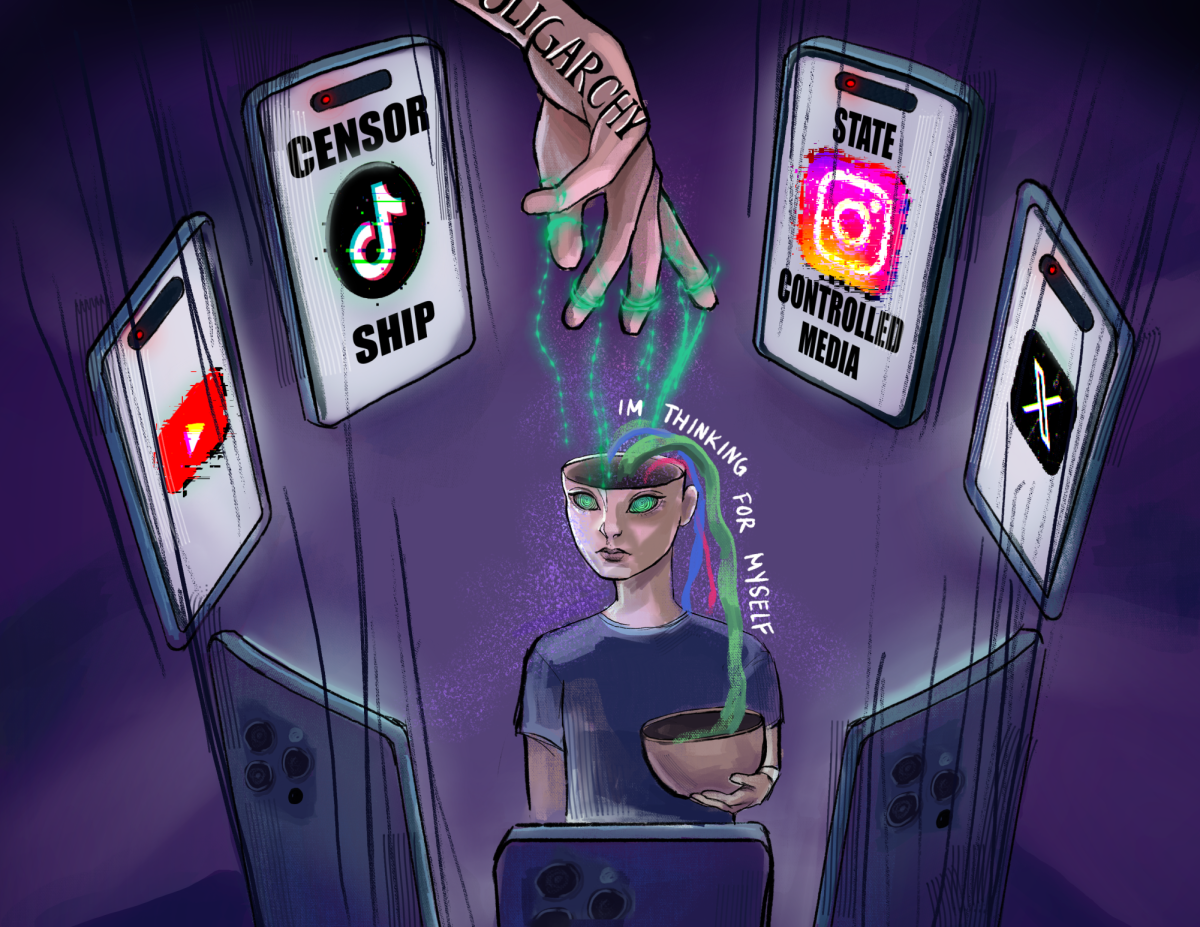TikTok has slowly, but surely, led to a cultural decline in America. Children consume mind-numbing media, while teens are fed product marketing after product marketing and adults are flooded with political commentary.
After a law temporarily banning the popular social media app TikTok, we are given the unique opportunity to reflect on TikTok’s faults. Instead of dreading the potential loss of Gen Z’s favorite app, it’s time we take full advantage of the moment.
The influx of low-quality content that has invaded even the youngest minds with terms like “skibidi toilet,” “huzz” and “rizz” can be described in two words: brain rot. This flood of superficial trends reflects a larger concern: the disappearance of intellectual engagement.
Brain rot, the Oxford Dictionary’s 2024 word of the year, was reportedly coined in Henry David Thoreau’s book “Walden,” a classic text included in Central’s AP Language and Composition curriculum. However, if brain rot continues to deteriorate the minds of youth and infiltrate language, future students may struggle to comprehend Thoreau’s work, let alone appreciate its deeper meaning.
Even TikTok communities considered to be intellectual, like booktok and influencers who share workouts or recipes, make a lazy attempt at providing truly informative content. Superior communities can be found in real life.
Local bookstores and libraries can provide just as many recommendations as the “For You” page, broaden your horizons as a reader or introduce you to a book club. Similarly, purchasing a cookbook and learning to follow a recipe is a far more valuable skill than passively scrolling through the latest food fads.
In every community of TikTok you will find some sort of advertising. The fitness influencer will have their shaker bottle linked to the video and the makeup artist will inform you her earrings can be found on her Amazon storefront. TikTok has encouraged overconsumption with content containing shopping hauls, micro trends and even outfit-of-the-day videos, which continuously push consumers to buy more in order to keep up with the latest in the fashion industry.
The way TikTok shapes news consumption is another significant concern. Today, 39% of adults ages 18-29 report getting their news from TikTok on a regular basis compared to only 9% back in 2020, according to Pew Research Center. This trend has created a generation of young adults who constantly consume short form news and other media meant to quickly capture your attention. This news is oftentimes too brief to capture the whole picture or allow for in-depth reporting.
What’s more, the TikTok algorithm amplifies content based on engagement, rewarding creators who post shocking or extreme opinions and distorting how information is consumed and shared. The “hot takes” trend, where creators share an opinion that is unpopular or controversial, highlights this phenomenon.
Videos with takes such as “the blue man group is the best thing white people ever invented” or “they need to bring fighting back to the NBA” have millions of views. While harmless, these videos demonstrate how the most controversial takes drive engagement.
For this reason, TikTok has facilitated an exaggerated sense of division in America as the most polarizing content generates the most engagement and therefore the most profit. A turn back to traditional news outlets and away from social media could help reduce the spread of sensationalism and misinformation.
TikTok’s temporary ban could be the eye opener that people need to start reconnecting with the community, and positively impact the culture around us.




